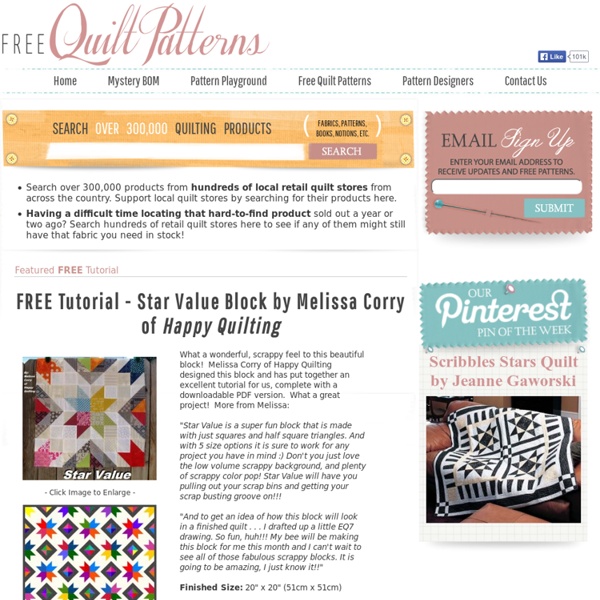



Rainbow Scrap Challenge Now is the time that people to start making plans for the new year. In honor of fresh starts, I am organizing a challenge to encourage people to use their scraps. One color theme will be presented each month along with some ideas for using scraps in fun and new ways. I am inviting anyone who would like to play along to try these ideas or some of your own. The plan is simple: comment to let me know that you want to participate in the challenge and I will start a list in the side margin. Already participating in another challenge? How do you get started? Scrap Quilts - Free Quilt Patterns - Learn How to Make Quilts Cinderberry Stitches Time to share a little Cinderberry fun with you just in time for Easter! It's a Bunny Bunting printable - it's quick and simple to make and will look too cute hanging in your home! No stitching or needle required, just plain old paper & scissor fun. What will you need? printer/scissors/hole puch/string and your happy face. {Download the printable from the link below} Download Bunny Bunting Step one: Download the Bunny Bunting printable from the link above and print from your home, I used 210gsm paper and printed about six pages {giving me 12 bunting rabbits} so print just what you require. Step two: Using paper scissors {not mamma's sewing ones here folk's} carefully cut out each bunny egg shape. Step three: Take your hole punch pop a hole in each of the white spots and thread the twine through the holes as shown. So enjoy playing & I'll chat again soon Natalie xx
Another UFO done and some more challenges I decided to redo my header and thought I would show you what the actual quilted item was. These were in my UFO pile. I made these placemats about 2 years ago but never finished putting the cluney lace around them. I also spent the day working on the Monochromatic Challenge that Judy is putting on. I am also taking part in her UFO Challenge and since #6 was drawn this is what I hope to finish this month. Then today I found another neat challenge - Rainbow Scrap Challenge by soscrappy.
Quilt Patterns - Beginner patchwork quilt patterns and quilting lessons Julia's Place....... UFO Challenge 2011 | Patchwork Times by Judy Laquidara Many online groups/guilds, as well as real life guilds have UFO Challenges each year. If you’re participating in one of those and wish to do this one too, feel free to deviate from the “rules” here and make it work for you. Really, there are no “rules” but the whole purpose is to end 2011 with less UFOs. Here’s how this one will work. Dig out the UFOs! This sounds harder than it is. As far as definitions, use your own judgment. UFO – Anything you’ve started and not finished. Completed Project – For me, it will mean quilted, bound and ready to be given away or used!
Cluck Cluck Sew One More Quilt Penny's Hands alamode Jane's Fabrics and Quilts A Fabric Case Stash Manicure